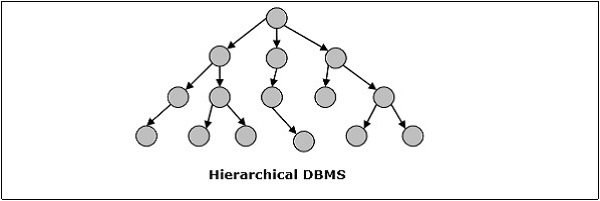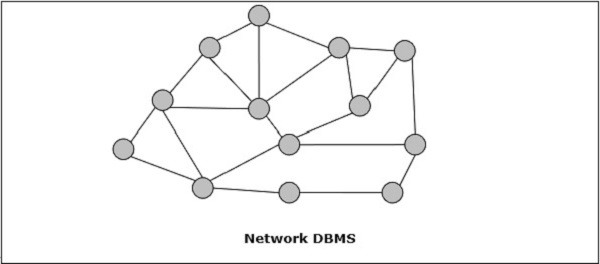
- Distributed Database Environments
- DDBMS - Design Strategies
- DDBMS - Distribution Transparency
- DDBMS - Database Control
- Query Optimization
- Relational Algebra Query
- Query Optimization Centralized
- Query Optimization in Distributed
- Concurrency Control
- Transaction Processing Systems
- DDBMS - Controlling Concurrency
- DDBMS - Deadlock Handling
- Failure and Recovery
- DDBMS - Replication Control
- DDBMS - Failure & Commit
- DDBMS - Database Recovery
- Distributed Commit Protocols
- Distributed DBMS Security
- Database Security & Cryptography
- Security in Distributed Databases
- Distributed DBMS Resources
- DDBMS - Quick Guide
- DDBMS - Useful Resources
- DDBMS - Discussion
Distributed DBMS - Concepts
For proper functioning of any organization, theres a need for a well-maintained database. In the recent past, databases used to be centralized in nature. However, with the increase in globalization, organizations tend to be diversified across the globe. They may choose to distribute data over local servers instead of a central database. Thus, arrived the concept of Distributed Databases.
This chapter gives an overview of databases and Database Management Systems (DBMS). A database is an ordered collection of related data. A DBMS is a software package to work upon a database. A detailed study of DBMS is available in our tutorial named Learn DBMS. In this chapter, we revise the main concepts so that the study of DDBMS can be done with ease. The three topics covered are database schemas, types of databases and operations on databases.
Database and Database Management System
A database is an ordered collection of related data that is built for a specific purpose. A database may be organized as a collection of multiple tables, where a table represents a real world element or entity. Each table has several different fields that represent the characteristic features of the entity.
For example, a company database may include tables for projects, employees, departments, products and financial records. The fields in the Employee table may be Name, Company_Id, Date_of_Joining, and so forth.
A database management system is a collection of programs that enables creation and maintenance of a database. DBMS is available as a software package that facilitates definition, construction, manipulation and sharing of data in a database. Definition of a database includes description of the structure of a database. Construction of a database involves actual storing of the data in any storage medium. Manipulation refers to the retrieving information from the database, updating the database and generating reports. Sharing of data facilitates data to be accessed by different users or programs.
Examples of DBMS Application Areas
- Automatic Teller Machines
- Train Reservation System
- Employee Management System
- Student Information System
Examples of DBMS Packages
- MySQL
- Oracle
- SQL Server
- dBASE
- FoxPro
- PostgreSQL, etc.
Database Schemas
A database schema is a description of the database which is specified during database design and subject to infrequent alterations. It defines the organization of the data, the relationships among them, and the constraints associated with them.
Databases are often represented through the three-schema architecture or ANSISPARC architecture. The goal of this architecture is to separate the user application from the physical database. The three levels are −
Internal Level having Internal Schema − It describes the physical structure, details of internal storage and access paths for the database.
Conceptual Level having Conceptual Schema − It describes the structure of the whole database while hiding the details of physical storage of data. This illustrates the entities, attributes with their data types and constraints, user operations and relationships.
External or View Level having External Schemas or Views − It describes the portion of a database relevant to a particular user or a group of users while hiding the rest of database.
Types of DBMS
There are four types of DBMS.
Hierarchical DBMS
In hierarchical DBMS, the relationships among data in the database are established so that one data element exists as a subordinate of another. The data elements have parent-child relationships and are modelled using the tree data structure. These are very fast and simple.

Network DBMS
Network DBMS in one where the relationships among data in the database are of type many-to-many in the form of a network. The structure is generally complicated due to the existence of numerous many-to-many relationships. Network DBMS is modelled using graph data structure.

Relational DBMS
In relational databases, the database is represented in the form of relations. Each relation models an entity and is represented as a table of values. In the relation or table, a row is called a tuple and denotes a single record. A column is called a field or an attribute and denotes a characteristic property of the entity. RDBMS is the most popular database management system.
For example − A Student Relation −

Object Oriented DBMS
Object-oriented DBMS is derived from the model of the object-oriented programming paradigm. They are helpful in representing both consistent data as stored in databases, as well as transient data, as found in executing programs. They use small, reusable elements called objects. Each object contains a data part and a set of operations which works upon the data. The object and its attributes are accessed through pointers instead of being stored in relational table models.
For example − A simplified Bank Account object-oriented database −

Distributed DBMS
A distributed database is a set of interconnected databases that is distributed over the computer network or internet. A Distributed Database Management System (DDBMS) manages the distributed database and provides mechanisms so as to make the databases transparent to the users. In these systems, data is intentionally distributed among multiple nodes so that all computing resources of the organization can be optimally used.
Operations on DBMS
The four basic operations on a database are Create, Retrieve, Update and Delete.
-
CREATE database structure and populate it with data − Creation of a database relation involves specifying the data structures, data types and the constraints of the data to be stored.
Example − SQL command to create a student table −
CREATE TABLE STUDENT ( ROLL INTEGER PRIMARY KEY, NAME VARCHAR2(25), YEAR INTEGER, STREAM VARCHAR2(10) );
-
Once the data format is defined, the actual data is stored in accordance with the format in some storage medium.
Example SQL command to insert a single tuple into the student table −
INSERT INTO STUDENT ( ROLL, NAME, YEAR, STREAM) VALUES ( 1, 'ANKIT JHA', 1, 'COMPUTER SCIENCE');
-
RETRIEVE information from the database Retrieving information generally involves selecting a subset of a table or displaying data from the table after some computations have been done. It is done by querying upon the table.
Example − To retrieve the names of all students of the Computer Science stream, the following SQL query needs to be executed −
SELECT NAME FROM STUDENT WHERE STREAM = 'COMPUTER SCIENCE';
-
UPDATE information stored and modify database structure Updating a table involves changing old values in the existing tables rows with new values.
Example − SQL command to change stream from Electronics to Electronics and Communications −
UPDATE STUDENT SET STREAM = 'ELECTRONICS AND COMMUNICATIONS' WHERE STREAM = 'ELECTRONICS';
-
Modifying database means to change the structure of the table. However, modification of the table is subject to a number of restrictions.
Example − To add a new field or column, say address to the Student table, we use the following SQL command −
ALTER TABLE STUDENT ADD ( ADDRESS VARCHAR2(50) );
-
DELETE information stored or delete a table as a whole Deletion of specific information involves removal of selected rows from the table that satisfies certain conditions.
Example − To delete all students who are in 4th year currently when they are passing out, we use the SQL command −
DELETE FROM STUDENT WHERE YEAR = 4;
-
Alternatively, the whole table may be removed from the database.
Example − To remove the student table completely, the SQL command used is −
DROP TABLE STUDENT;